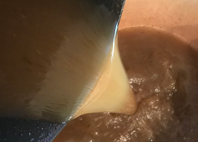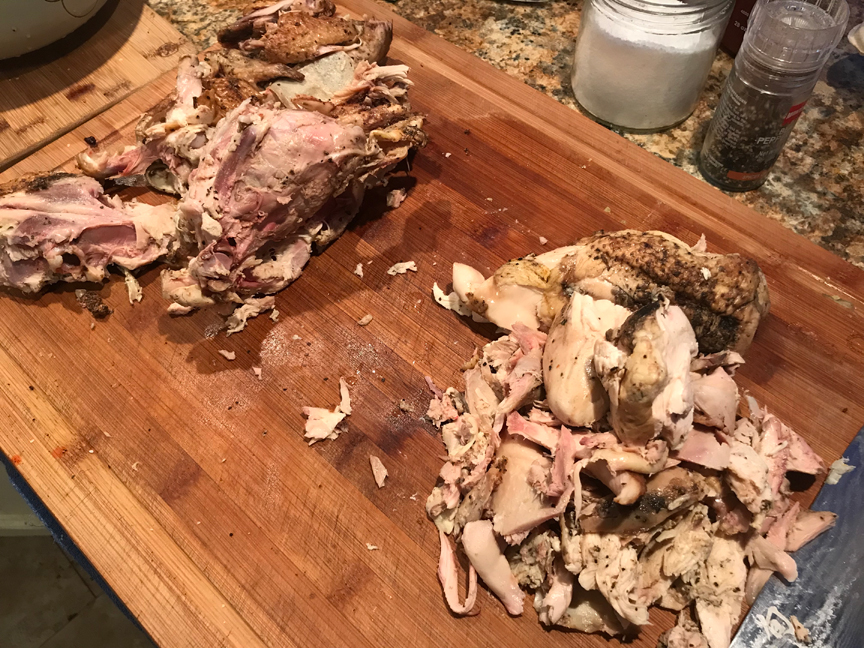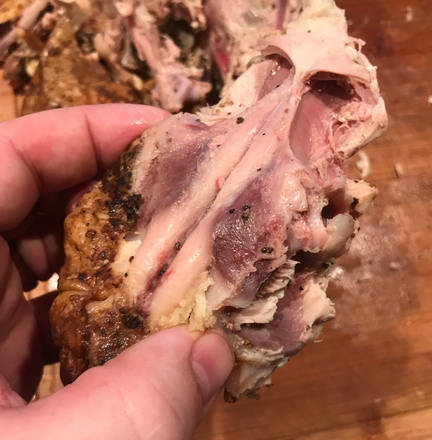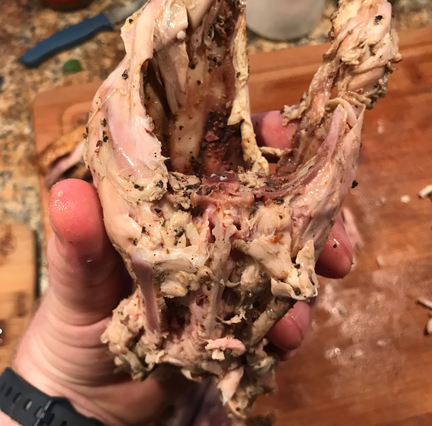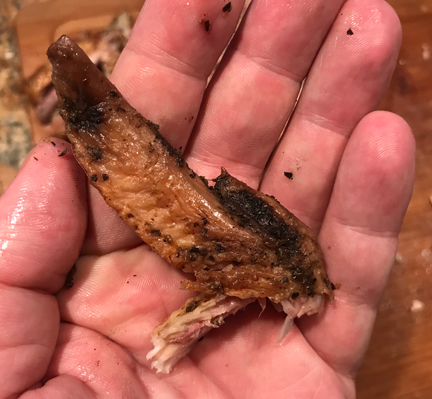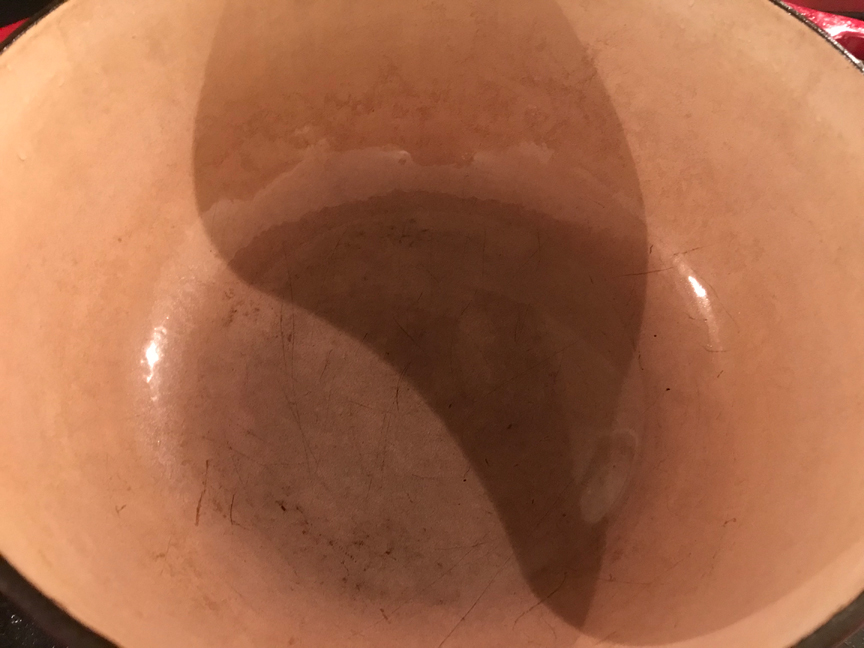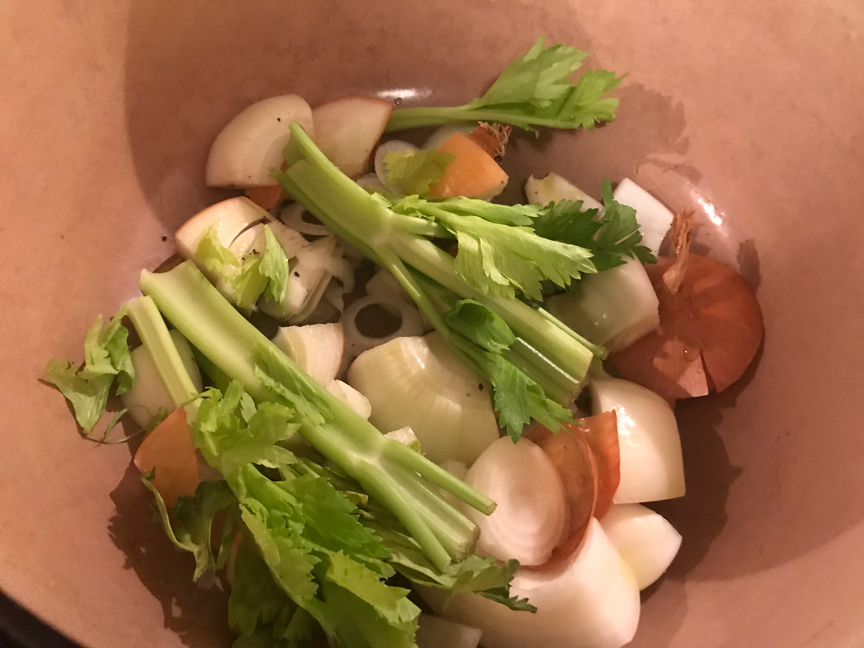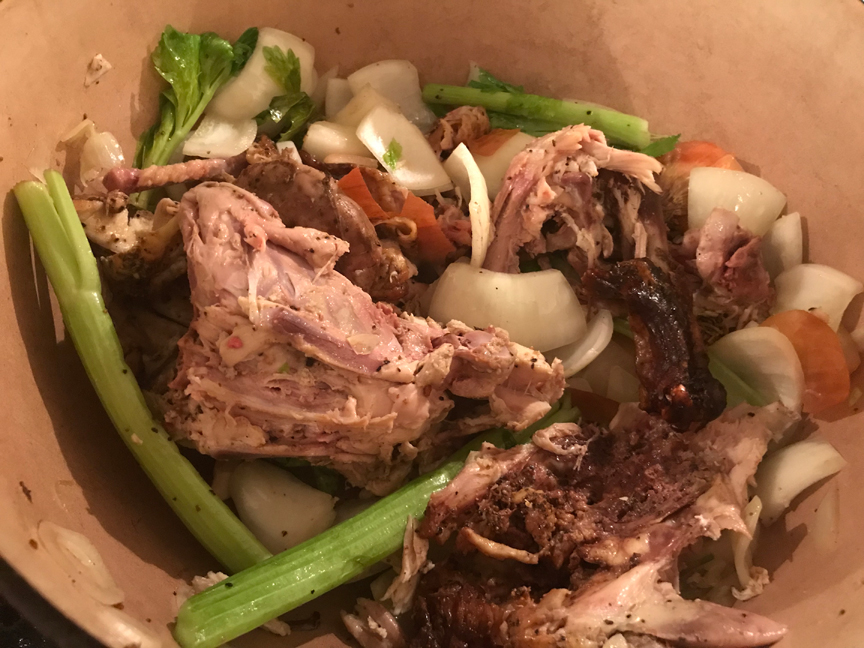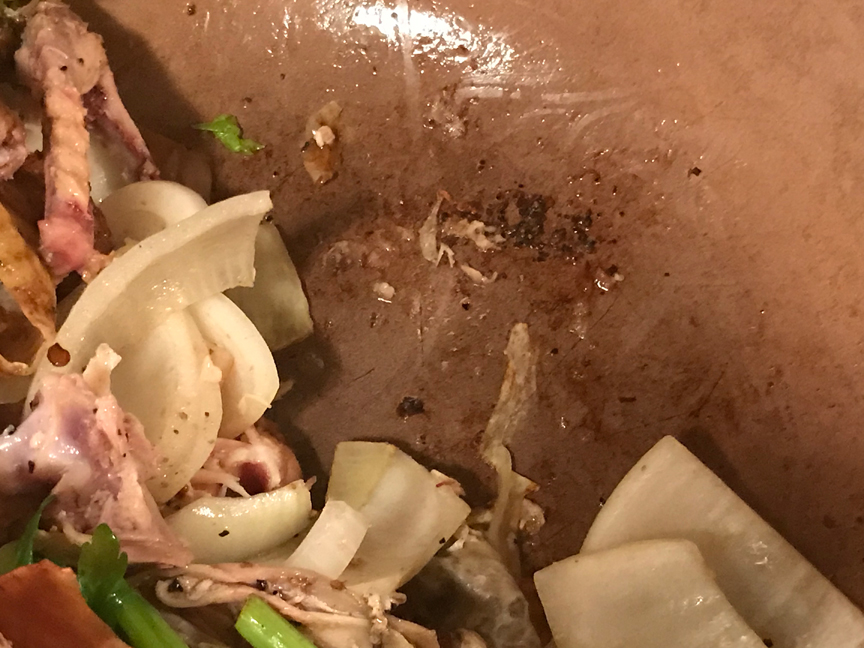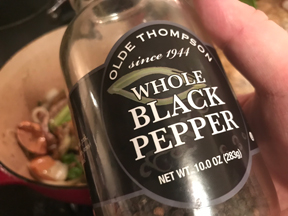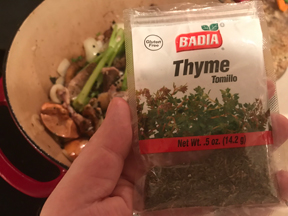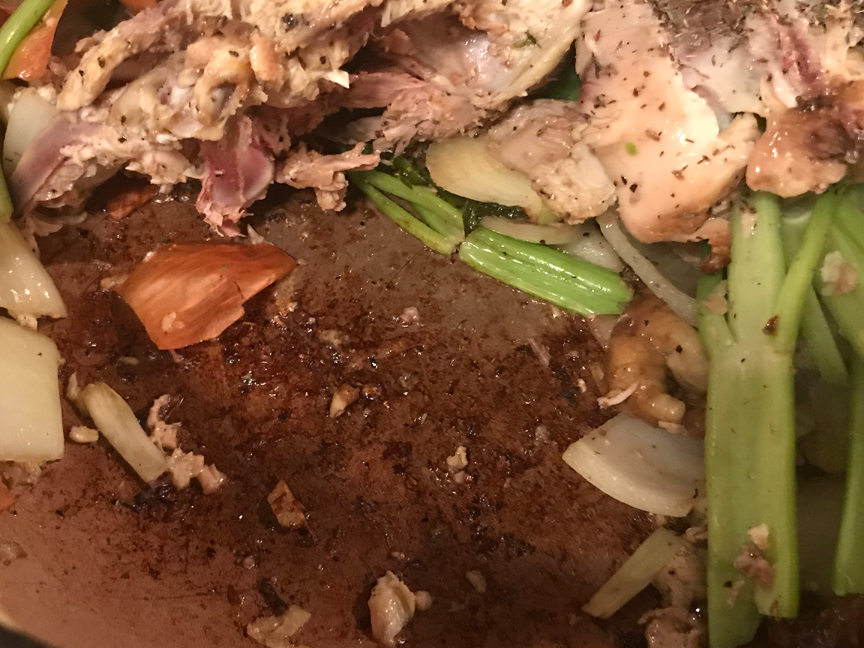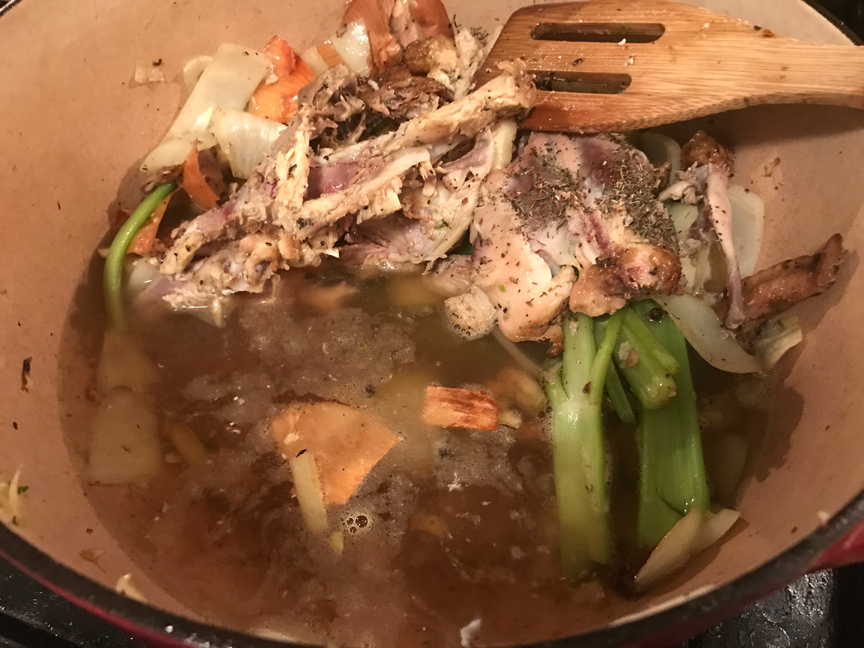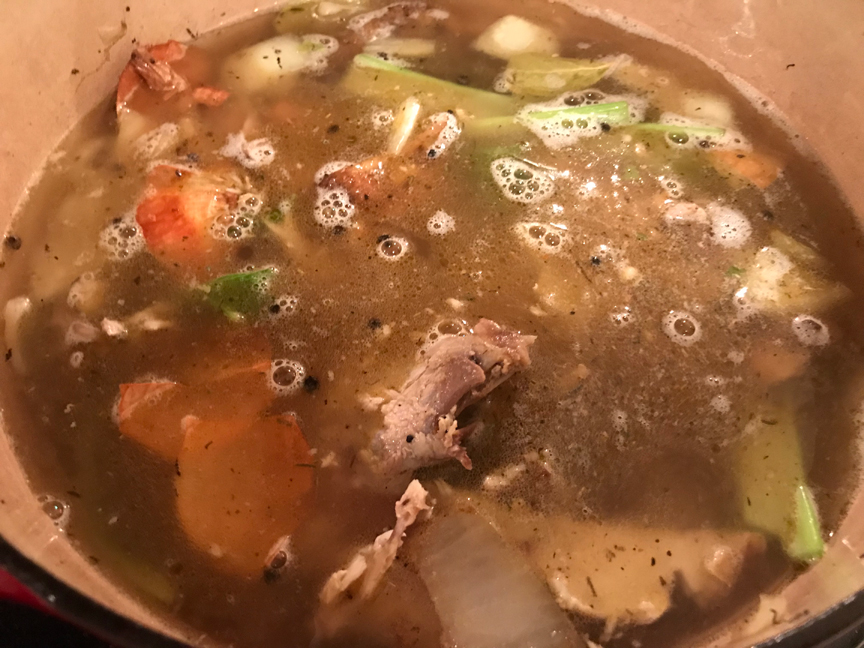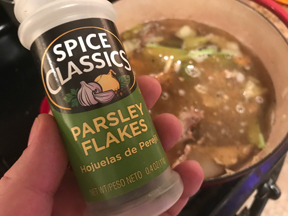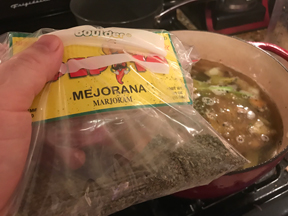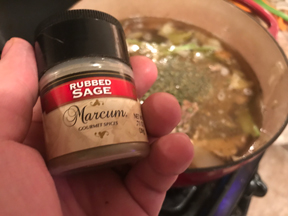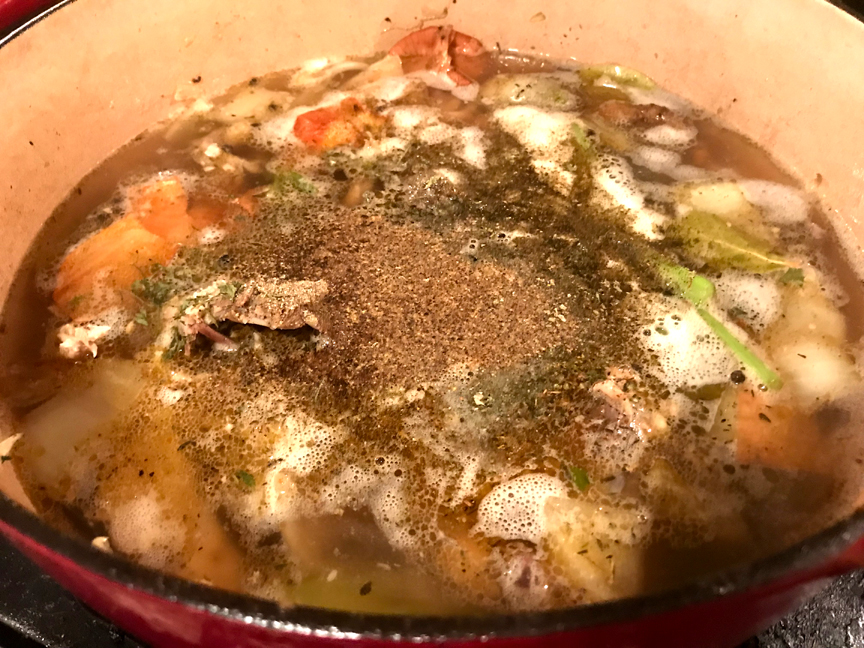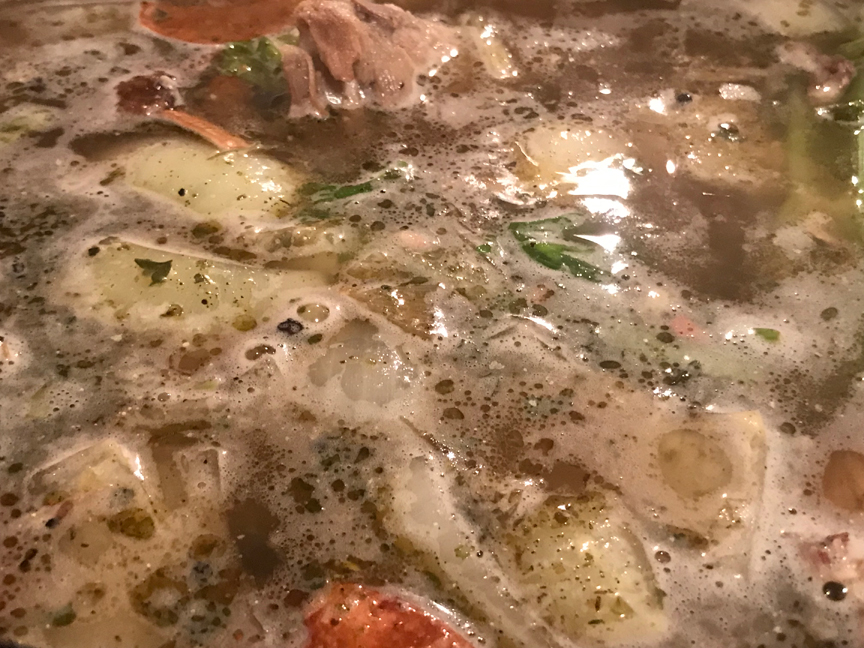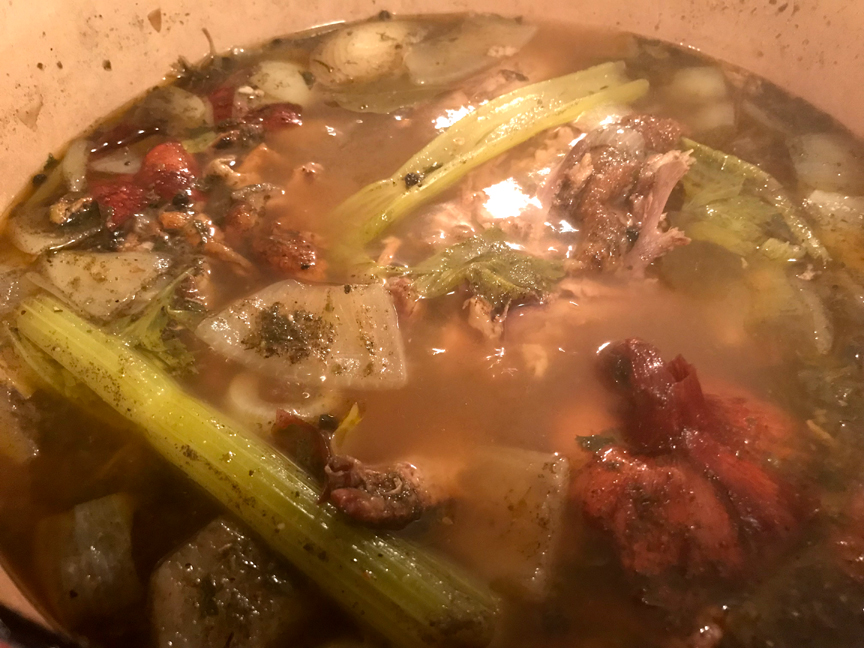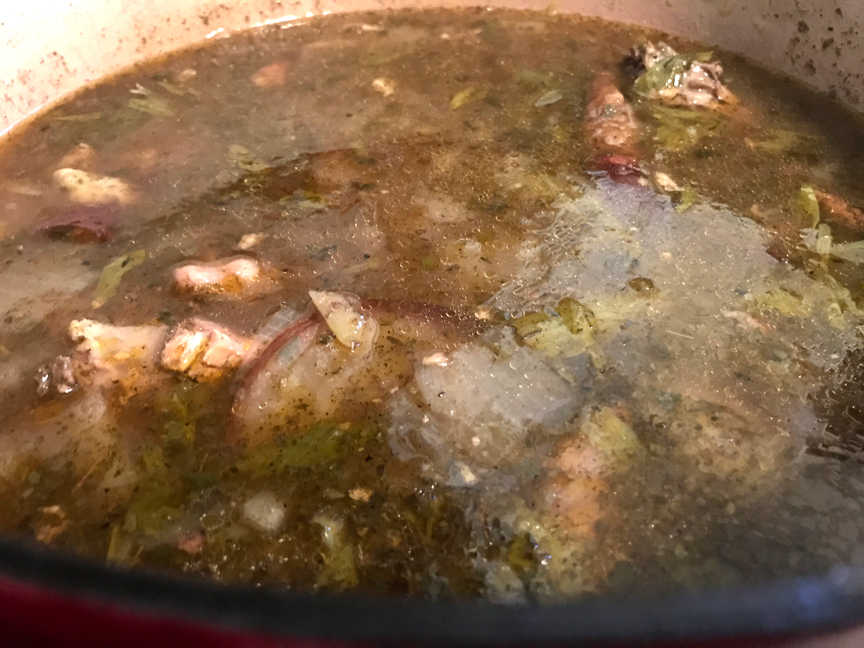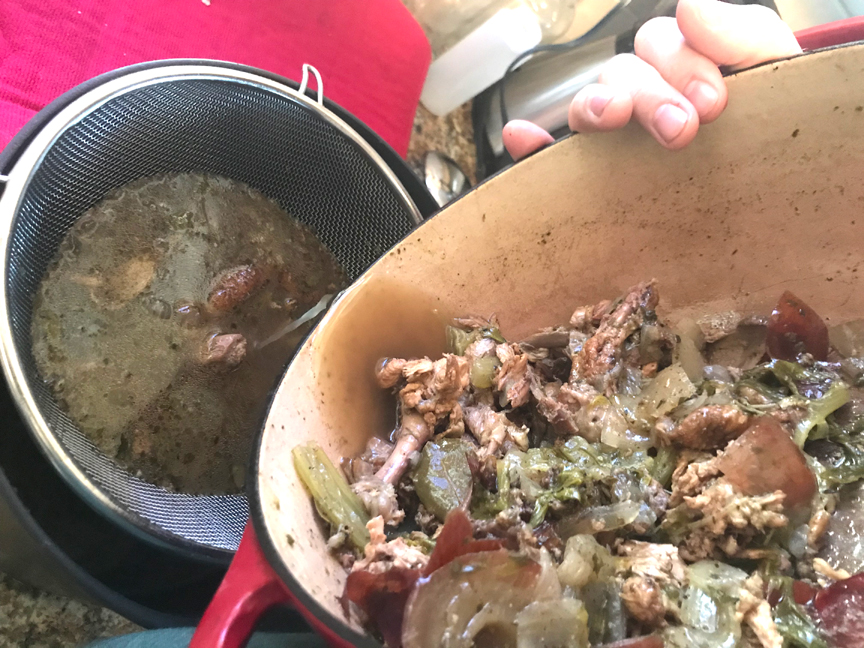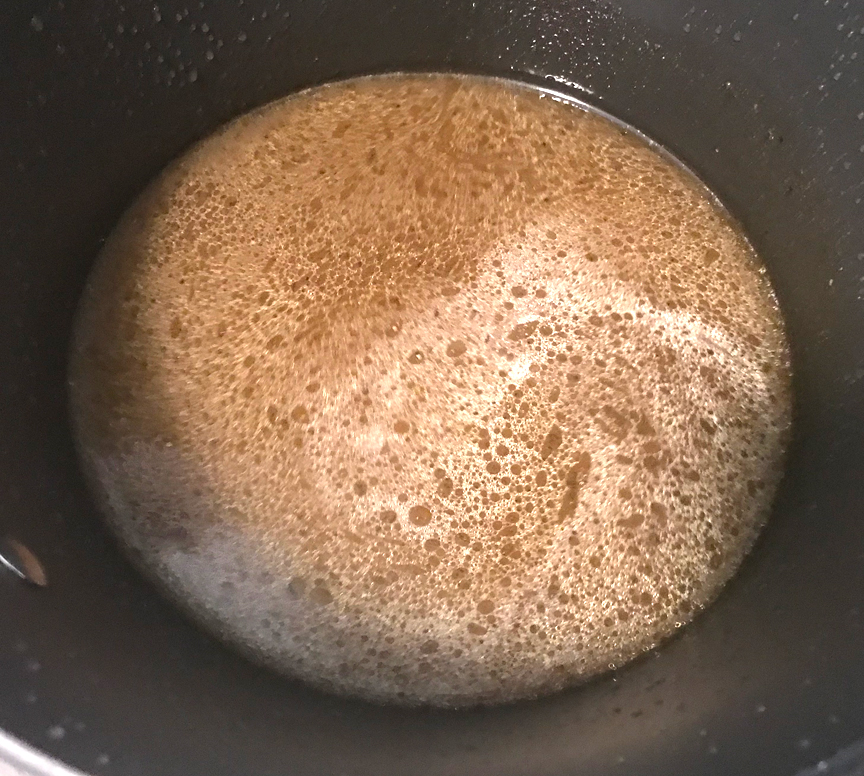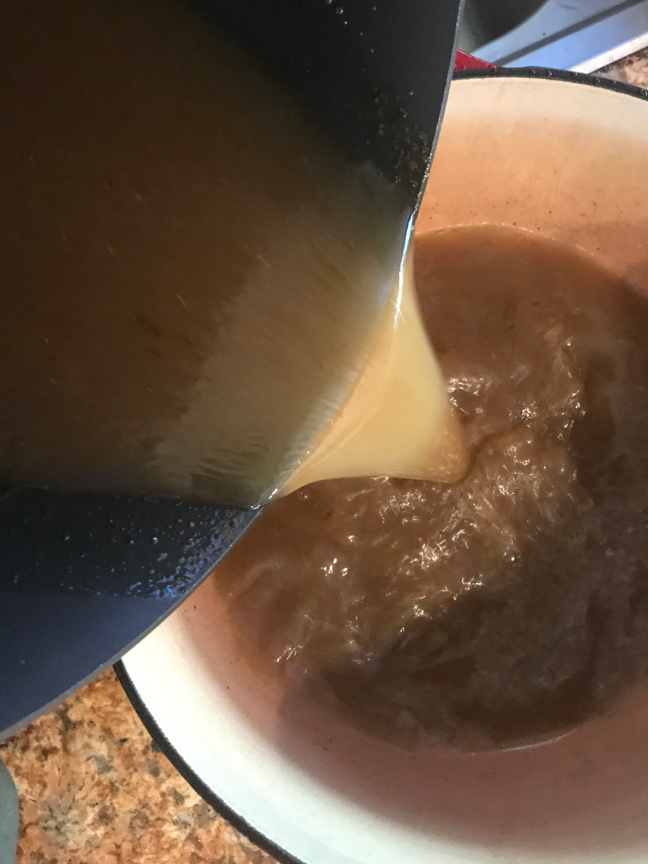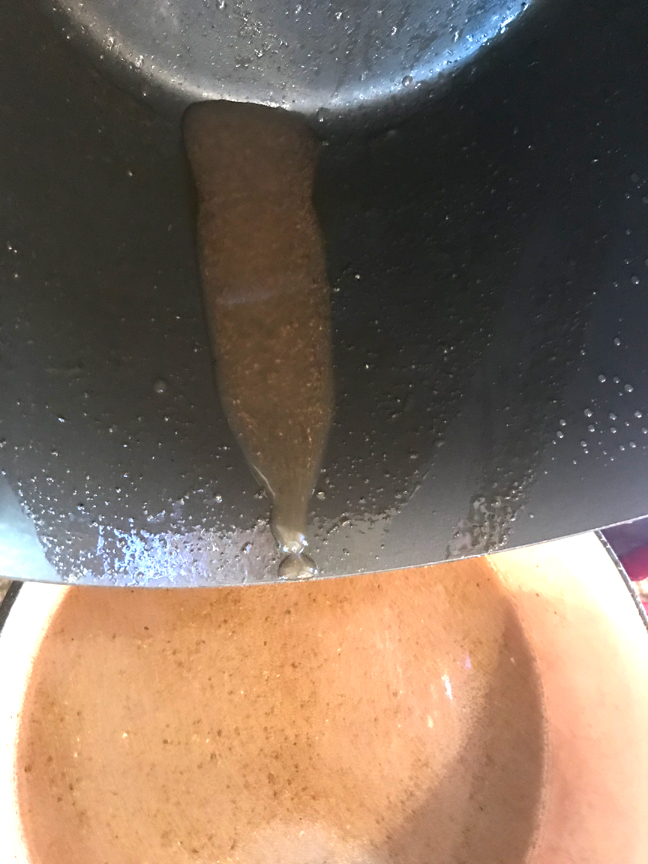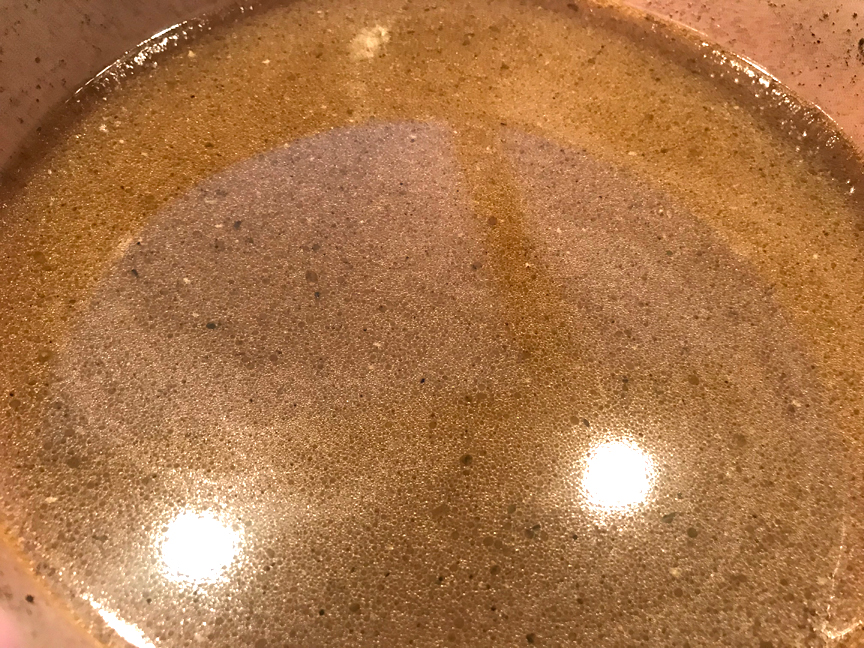The other day I posted a pic of this killer ramen I made, using some of my home cooked brisket and a broth that I made out of brisket trimmings! Totally good for your heart, I swear, but here's what it looked like:
Pretty killer right? It got some really good feedback and my coworker expressed interest in learning what I know about making broth, so here we go!
First off, let's answer a question here. What is the difference between Broth and Stock? Broth indicates that it was made with cuts of meat, and Stock indicates that it was made with bone, skin, fat and other trimmings that would normally go in the trash, along with cuts of meat. What I like to make is Stock. Stock is rich as heck, and I really like to know that I'm getting the most from the food I'm buying.
So let's get into it -
I smoked a whole chicken a while back, and as I got to the end of it, I decided to strip as much meat as I could off of the carcass and prep for my stock - vegans look away now!
All the pieces you throw away are going into this thing!
The back -
The ribcage -
Random leg bones
Even the wing tips are great for this!
A dutch oven works great for this process.
The real art at this point is to imagine what you're going to use this broth for in the future. Are you going to make a soup? Are you going to use it in a rice dish? Are you going for a specific culture's cuisine? Think of the ingredients and spices you want to flavor this stuff. Every style of food has its base ingredients, and the internet is a great resource for finding those ingredients. However, it really boils down to what ingredients you have on hand, you could technically not add any ingredients and just boil your carcass (and/or cuts of meat) in water - and worry about flavoring it later - but I just like to finish these things off in a way where they're ready to roll out into a dish right out of the freezer. (I freeze my stock after I make it...)
For the batch in this feature, I'm just going for a batch of basic chicken soup-ish style stock that could stand alone as a sippable treat.
Ideally, I'd throw a mirepoix in there with some oil (carrots, onion, celery) but I didn't have any carrots - so onion and celery it is!
Yeah, I didn't take the skin off the onion, and yeah, I didn't cut things up too much or trim the leaves off my celery - this all gets strained! I dropped a couple smashed cloves of garlic in there too - and I I got things sizzling!
Once the veggies started to sweat and break down, I added the carcass!
I just let it go on medium-high heat The goal is to get some good browning to form on the bottom of the Dutch Oven.
You can see it's starting there!
At this point, I just start tossing in spices - even though there's no water, I really don't care.
Black pepper - Thyme - Bay Leaves!
Let's get a look at that browning -
Oh yeah - that's some good color - time to start adding water. The water will work this browned goodness off, and add to the flavor of the stock.
Keep adding until everything is totally submerged.
Now while bringing everything to a boil, I just keep adding ingredients I think would go together. I don't measure, I just kind of add stuff based on my experience.
Parsley flakes, Marjoram, Sage, Onion Powder, a little adobo and SALT!
It's a ton of ingredients I know - but they work together, I swear!
Things start boiling, and at this point, depending on the meat or bones you're using - you may want to skim any foam that might start coming to the surface. This batch wasn't that bad - chicken is usually fine, it's beef and pork based stock that get really foamy., you want to get any thick foam out of your stock - this level of foam is ok.. when it gets chunky and weird - that's gotta come out.
Once it's been boiling for a few minutes and you've skimmed some foam, turn things to low, put the lid on and leave it for an hour and a half or so, stirring every 20 min or so (and skimming if applicable).
At the end of the cook, things will be seriously cooked down and your whole house will smell delicious!
Kill the heat and let it completely cool with the lid on. You want it to cool because you're going to pour it out and don't want piping hot stock to splash on yourself or a super hot pot to burn your mits - especially a hot heavy dutch oven that you might drop and wreck your kitchen floor with.
Look at this flavor!
Now it's time to strain! Pour into a fine sieve over a pot, and pour as much as you can while leaving as much of the bones and boiled veggies in the pot as possible. This serves two purposes - 1: The bones don't flop out and go tumbling all over, making a huge mess, and 2: There may be small fragments of bones that you don't want getting into your final product - this will help avoid that! (so will the sieve, and pouring very slowly... but still)
Look at that pot of goodness!
Now you dump the bones and stuff into the trash, and rinse out your pot so you can pour it again to further filter out the small 'bottom bits'. It's very possible that the 'bottom bits' are actually herbs and spices - but their flavors are in the stock now. This could just be an unnecessary step for all I know - I'm not classically trained - I'm just a guy who likes getting the most out of the meat he eats!
Look at this pour! you can see the succulence in the event horizon - lip smacking goodness!
Here's a visual on the 'bottom bits' in the pot at the end of the pour that I leave out of my stock - probably just pepper and stuff, right - maybe I have OCD, who knows.
And BOOM! Stock!
To quote Tompopo (again) 'Look at the jewels of fat glistening on the surface' ! At this point if you were health conscious, you could take the pot, stick it in the fridge to cool and skim the fat that solidifies off the top. I don't do that.. not yet anyways - I'm sure my doctor will eventually tell me I need to or I'm going to die in a day or some crap.
Well, I hope this tutorial helped a little. You can really make stock out of a lot of different things - and I guess if you turn it into soup, it becomes a broth? I don't know! meh, it doesn't matter - It's not really difficult to make, and there are so many practical applications for this stuff. Start making your own stock/broth - you'll never go back to a prepackaged stock again!

